Waterproof Jacket Buying Guide
Staying warm and dry is the key to a comfortable, enjoyable outdoor experience – and the best waterproof jackets help you stay safe too!
If you don’t give up when the rain starts coming down, you will know the importance of keeping dry and comfortable during your days embracing the outdoors. However, with an ever-growing array of styles, fabrics and features to choose from, it can be difficult to know which is the best waterproof jacket to invest in.
To help you find the best waterproof jacket (or hard shell as they’re otherwise known), we have put together a foolproof guide to help you on your way. With plenty of advice, tips and tricks, you’ll find the perfect waterproof jacket for you to stay cosy and dry on whatever outdoor activities you choose.
Read on to find out more about choosing the best waterproof jackets; including important features, useful considerations when buying, and which types are best for different outdoor activities…
What is a waterproof jacket for?
This is a pretty obvious question to ask – and it’s true that the core job of a waterproof jacket is to keep you dry – but it should also do more than just that.
The best waterproof jackets should also be breathable, allowing sweat and vapour to escape so you stay dry from the inside (and avoid that clammy feeling that can happen on wetter walks). They should also help you to regulate your temperature so you can enjoy your time outside, even when it’s pouring with rain. Some of the best lightweight waterproof jackets can also be easily tucked away when you don’t need them – perfect to help you keep up with the unpredictability of British weather.
Why do I need a waterproof jacket?
Again, this feels like a simple question with an obvious answer – if it’s raining, you need a waterproof to help you stay dry, so you can continue to explore the outdoors uninterrupted.
As such, most waterproof jackets are designed with an outdoor activity in mind. Some are made for high-intensity activities, like running, and make breathability their main feature. This helps you to stay comfortable by allowing extra heat to escape.
What are the types of waterproofing?
One of the first, and most obvious, things to consider when buying a waterproof jacket is just how good it is at keeping the rain out. The biggest factor that differentiates a budget waterproof jacket from a more expensive one is the kind of technology it uses to keep you dry. The best waterproof jackets will use a combination of different techniques to maximise performance and help you have a positive outdoor experience regardless of the weather…
Water repellent technology: explaining DWR
Durable Water Repellent, or DWR, is a commonly used water repellent technique to help prevent fabric from absorbing moisture. You can tell if a jacket has this coating because water will bead up on the surface of the fabric and trickle off, rather than soak in.
However, on its own, a DWR coating is typically not enough for a raincoat to be considered fully waterproof – you would still get wet if all your clothing had was this. Instead, a DWR coating needs to be combined with either specially designed waterproof fabrics, or waterproof membrane technologies to keep you dry…
Jackets with a waterproof fabrics
Many of the best waterproof jackets will be treated with a DWR coating on top of a waterproof fabric. Some manufacturers use their own waterproof fabric technologies to help them create effective outdoor gear, with some examples including:
- Isotex (Regatta).
- Texapore (Jack Wolfskin).
- HydroDry (Sprayway).
- HydroShell (Berghaus).
- AquaDry (Craghoppers).
These fabrics will have a range of qualities, such as breathability, waterproofness, insulation etc, which can affect which one is right for you. To choose the best jacket, read through the specifications before you buy, or contact our team for help.
One point you should know however, is that jackets with DWR-coated waterproof fabrics tend to be less expensive. This may be better for your budget, but it can also lower breathability, and these jackets will require regular re-proofing to ensure you stay protected (see more about this below).
Jackets with a waterproof membrane
Alternatively, some of the best lightweight waterproof jackets contain what’s known as a waterproof membrane. This is a thin layer of microscopic pores that are big enough to let moisture out, but small enough to prevent rain droplets from getting in.
One of the advantages to this is that a breathable membrane will provide much more internal moisture control, because it will allow sweat to escape. This helps to prevent that uncomfortable clammy feeling, which is ideal if you’re planning something more strenuous than a casual weekend walk.
GORE-TEX® is easily the most recognisable and widely used membrane, supporting huge brands such as Berghaus, Mountain Equipment, Sprayway, Craghoppers and many more.
Want to learn more about this technology? Find Everything You Need to Know About Gore-Tex® with Winfields.
Waterproof fabrics vs membranes
It’s worth noting that there is a distinct difference between waterproof fabrics and membranes. Waterproof fabrics rely on the outer layer protecting you from the elements, while waterproof membranes are fused between an inner and outer layer of fabric for optimal performance.
This additional level of processing is why waterproof jackets using membrane technology tend to be a little more expensive than other options. Effectively, if you’re looking for a general coat to wear from day to day, waterproof fabrics will be sufficient. But, if you’re looking for more enhanced comfort and protection, you should consider investing in a quality rain coat with waterproof membranes for peak waterproofness.
Top tip: fabric and construction play a big part in making sure your jacket is waterproof – and another key aspect of your jacket is taped seams (which you can learn more about below).
Hydrostatic Head test
This measures how waterproof a jacket is. It is calculated by applying a column of water an inch in diameter against the fabric, and seeing how high the water will rise before it starts to seep through the jacket.
Still confused? Let’s look at an example. Say a jacket has a 5000mm rating: this means the water rises to 5 metres before water penetrates the fabric.
For a fabric to be called waterproof, it must have a rating of at least 1500mm. However, for everyday use, you need a much higher rating to deal with pressure from wind, elbows and brushing up against rocks.
As a general rule, a rating of 5,000mm-10,000mm is ideal for spending long days on a mountain in all weather conditions, while 10,000mm-20,000mm is best for much wetter climates.
Waterproof jacket breathability
Alongside the ability to keep water out, the best waterproof jackets are measured in terms of breathability. This is a concept we’ve mentioned a lot so far, but what do we mean when we talk about the breathability of your waterproof jacket, and why is it an important factor to consider before you buy?
According to the dictionary, in textiles, breathability describes ‘the ability to let air pass through so that perspiration can evaporate’. Effectively, breathable fabrics provide protection from the elements while still allowing air to flow through the fabric to help with temperature regulation. Depending on your activity and budget, you may or may not want the addition of the breathability factor.
If you’re a keen hiker or outdoor runner, it’s a great feature to have, making you feel more comfortable throughout your hike or walk. Without any breathable membrane, sweat and heat is unable to escape – leaving you feeling damp and clammy.
If you want breathability then you’ll need to go for a jacket with a membrane, such as GORE-TEX®. However, there are other features that can add breathability to your jackets, such as underarm ventilation zips and mesh-lined pockets.
As a general rule, the more energetic the activity you’re doing, the more breathable you’ll need your jacket to be.
Top tip: the best waterproof jackets with a breathable membrane can be more expensive, and in some cases, increase the pack size and weight. You’ll need to carefully consider whether the benefits outweigh this, or whether a coated waterproof jacket will suit your needs.
Measuring breathability: MVT (Moisture Vapour Transfer)
To understand how breathable your waterproof jacket is, you need to look at the MVT rating. This is calculated by how much moisture can pass through the fabric in 24 hours. You may see this displayed as 10,000 gr/m²/day or 10,000gr.
For the most part, you don’t need to worry too much about breathability ratings: a good waterproof membrane will be highly breathable. And, for highly active use, where you will sweat no matter what, look for features such as underarm zips to increase ventilation to keep you cool.
Best waterproof jacket features
While waterproof jackets may differ depending on their price or brand, there are key features that you should look out for. We’ve highlighted them in the diagram below before going into a bit more detail.
- Adjustable hood: a good hood should be adjustable to give you a snug fit and help protect you from the wind and rain. A peak is also useful for directing rain away from your face.
- Chin guard: this is a soft piece of fabric on the inside of the jacket to protect your face from rubbing or catching the zip and waterproof fabric for a more comfortable, secure fit.
- Taped seams: taping is used to seal the inside seams of a waterproof jacket, covering the holes caused during sewing and construction. This adds an extra level of protection against leaks.
- Storm flaps: this is a thin strip of material across your main zip that adds an extra level of protection against leaks and water ingress.
- Pockets: inner pockets are good for protecting your valuables, and on outer pockets look for covered zips to prevent water from getting through into your pockets.
- Adjustable hem: having a drawstring adjustable hem helps to create a snug fit to prevent wind and rain from getting in your jacket.
To help you choose your next waterproof jacket, we’ve picked some of the most popular options to show you below. Alternatively, you can browse our entire outdoor Waterproof Clothing selection to find everything you need for a wet weather adventure…
Craghoppers Men’s Diggory Waterproof Jacket
Expertly designed for wet weather, Craghoppers Men’s Diggory Waterproof Jacket is a fantastic option to keep you dry on any outdoor adventure – and it’s made even better by being made with recycled materials where possible.
Craghoppers waterproof jacket uses an AquaDry Stretch membrane to not only keep you dry, but also allow for maximum mobility when you’re hiking. Combined with a Hydrostatic Head rating of 15,000mm, this is definitely one of the best waterproof jackets for exploring in changeable British weather. There’s even three practical pockets to keep your essentials close by on the trail.
Regatta Men’s Birchdale Waterproof Jacket
Looking for one of the best lightweight waterproof jackets? Then you’ve come to the right place. The Regatta Men’s Birchdale Waterproof Jacket combines practicality with a simple design to offer you a great general wear raincoat.
Made with recycled materials, and incorporating taped seams, a Isotex DWR coating providing 10,000mm protection, and moisture-shedding zips into the design, you’ll be able to stay comfortable and dry in rainy weather. Plus, the peaked hood, adjustable hems and hook and loop cuffs mean you can fit this coat to your body shape for maximum protection from the elements.
Sprayway Men’s Santiago I.A. Waterproof Jacket
For a classic, all-weather rain coat, we love the Sprayway Men’s Santiago I.A. Waterproof Jacket. The two layer HydroDRY® 70D taslan polyester fabric can easily withstand whatever the British weather decides to throw at it, ensuring you’re kept warm and dry on your outdoor adventure.
Don’t forget the adjustable hems and cuffs, and an adjustable hood with a wired peak that lets you personalise the fit of your coat for extra cosiness. And, there are plenty of pockets to keep your snacks and phone close to hand. For added versatility, you could even combine this outer layer with one of Sprayway’s Santiago I.A. Full-Zip Fleeces for a convenient 3-in-1 jacket!
Regatta Women’s Winter Calderdale II Insulated Waterproof Jacket
Want to stay cosy and dry throughout the winter? The Regatta Women’s Winter Calderdale II Insulated Waterproof Jacket is the ultimate everyday jacket for the colder months. With a breathable, waterproof design, you can stay warm on your commute, or when you’re out with the family at the weekend.
Constructed with an Isotex 10,000mm recycled polyester outer layer to protect from the rain, and mid-weight Thermoguard insulation to trap heat close to the body, feel free to explore wherever you want in comfort and style. Plus, it’s finished off with adjustable cuffs, hood, and hems for extra protection from water and cold breezes.
Sprayway Women’s Atlanta I.A. Waterproof Jacket
Get more for your money when you choose the Sprayway Women’s Atlanta I.A. Waterproof Jacket. Built with their breathable two layer Hydro/Dry® fabric, and paired with a mesh/taffeta lining for all-day comfort, this is a fantastic women’s rain coat to keep you cosy in the winter.
With an adjustable fit, and plenty of large pockets, customise this jacket to your needs wherever your adventure may take you. Plus, turn it into a handy 3-in-1 when you zip in the extra Sprayway Women’s Atlanta I.A. Full-Zip Fleece layer for even more cosiness.
Regatta Women’s Birchdale Waterproof Jacket
A titan of affordable, high quality outdoor wear, Regatta has come through yet again with the Women’s Birchdale Waterproof Jacket. Providing breathable but secure protection from the rain and full mobility via stretch fabric, this jacket is finished with taped seams and a DWR coating to maximise your comfort.
It also features a peaked hood with added adjusters to offer full protection during wet weather, alongside hook and loop cuffs and a shockcord hem to seal out cold breezes and more.
Kids waterproof jackets
Of course, we couldn’t forget your little ones. Make sure they’re comfy and cosy on your next family adventure with some of the best waterproof jackets for kids, including:
- Sprayway Kids Eldon I.A. Waterproof Jacket: small but mighty, get everyone matching waterproof jackets from Sprayway this winter. Using the same tech as the adult I.A. collection, get superb weather protection and comfort for the whole family.
- Regatta Kids Highton V Waterproof Insulated Jacket: with a 15,000mm waterproof rating, this is a practical all-round jacket for the colder months – with Thermoguard insulation to keep the little ones warm and cosy on their outdoor adventures.
How should a waterproof jacket fit?
When you’re buying a waterproof jacket, you must always take the fit into consideration. A closer-fitting jacket will flap around less and breathe more effectively, while a looser fit will give you more freedom of movement and more scope for layering in cold weather. Of course, for casual outdoor activities or more general wear, you should try to aim for somewhere between these two extremes.
Once you’ve chosen a style, you need to make sure you have the perfect fit for your body. We recommend:
- Making sure your jacket covers your lower back when you lift both your arms.
- Checking that the cuffs cover your wrists for warmth.
- If the jacket has adjusters, use them to tailor the fit to your body shape to help keep cool air and rain off you.
- If you are going to layer your waterproof jacket over clothing, like a fleece, then try the next size up to make sure it still fits comfortably.
How to clean a waterproof jacket
The worst enemy of your wet weather gear is your washing machine. Detergents strip off waterproof coatings, and conditioners will clog the pores and fibres that help fabric breathe. Instead, it’s a good idea to use a cleaner that’s specially designed for technical outerwear.
You may also need to re-proof your waterproof jacket every once and a while. Over time, waterproofs can become less effective and stop working as well as they did when they were new. However, it’s really easy to restore them to their original waterproof glory using cleaning and reproofing products to prolong the life of your gear.
Learn How to Reproof a Waterproof Jacket with Winfields, and explore our collection of Nikwax to find the supplies you need to maintain your jacket for as long as possible.
When to buy a new waterproof jacket
If you’ve tried reproofing and repairing a waterproof jacket a couple of times, it’s probably time to treat yourself to a new one. There are certainly plenty to choose from with all sorts of features and technologies to help you battle the elements.
So which waterproof jacket should you choose? A good way to decide this is to consider what you’ll primarily be using it for (which we’ll discuss in more detail further down).
But, as a brief example, if you’re doing serious hill walking, then you may want a stiffened hood, storm flaps, and pockets for extra storage. Or, if you’re a keen climber, you might want to consider something that’s a little more hardwearing, with a looser fit for ease of movement, and something which has adjustable cuffs and hems.
Choosing the best waterproof jacket for you
Still not sure how to choose the best waterproof jacket for your needs? We’ve got you covered. Below, we’ve picked out a few activities and some of the key features you should look out for when buying a waterproof jacket:
Hiking & Hill Walking
Love hiking and hill walking, even in the rain? Make sure to look for jackets with:
- Stiffened hoods to keep the wind and rain off your face.
- Good breathability to keep you cool.
- Storm flaps to avoid leaks.
- A waterproof and breathable membrane, such as GORE-TEX® for comfort and high specification.
- Pockets for extra storage for essentials like trail snacks, phone, a small torch etc.
Mountaineering & Climbing
If you’re trekking up a mountain, or climbing in wet weather, you need a durable jacket that can keep up with you. The best waterproof jackets for climbers have the following qualities:
- Good breathability to manage your temperature.
- Relaxed fit to allow for greater freedom of movement.
- Tough & hard wearing to survive the rigours of the trail.
- Consider choosing a jacket with a waterproof membrane, such as GORE-TEX®.
- A larger hood that allows you to easily wear a helmet.
- Adjustable hems and cuffs for a customisable fit.
Everyday Use
The best waterproof jackets aren’t just for adventures – they cover you for the everyday too. Whether you need one for your daily commute, or for dog walks in the park, look out for the following:
- Lightweight to slip on and off as you need.
- Affordable to suit your budget.
- A waterproof coated jacket is often sufficient for general, everyday use.
- Plenty of pockets to keep essentials close, like your phone, keys, wallet/purse, and small daily accessories.
Stay cosy and dry with Winfields Outdoors
Stay warm, cosy, and most importantly dry with our range of outdoor gear at Winfields. Picking up a new jacket? Don’t forget to explore our collection of Waterproof Shoes, Wellingtons, and Walking Accessories to make sure you have everything you need for your next wet weather adventure!
Tips for Camping in the Rain and Wet Weather | What are Gaiters? Gaiters Buying Guide | Is It Time To Replace Your Waterproof Jacket?

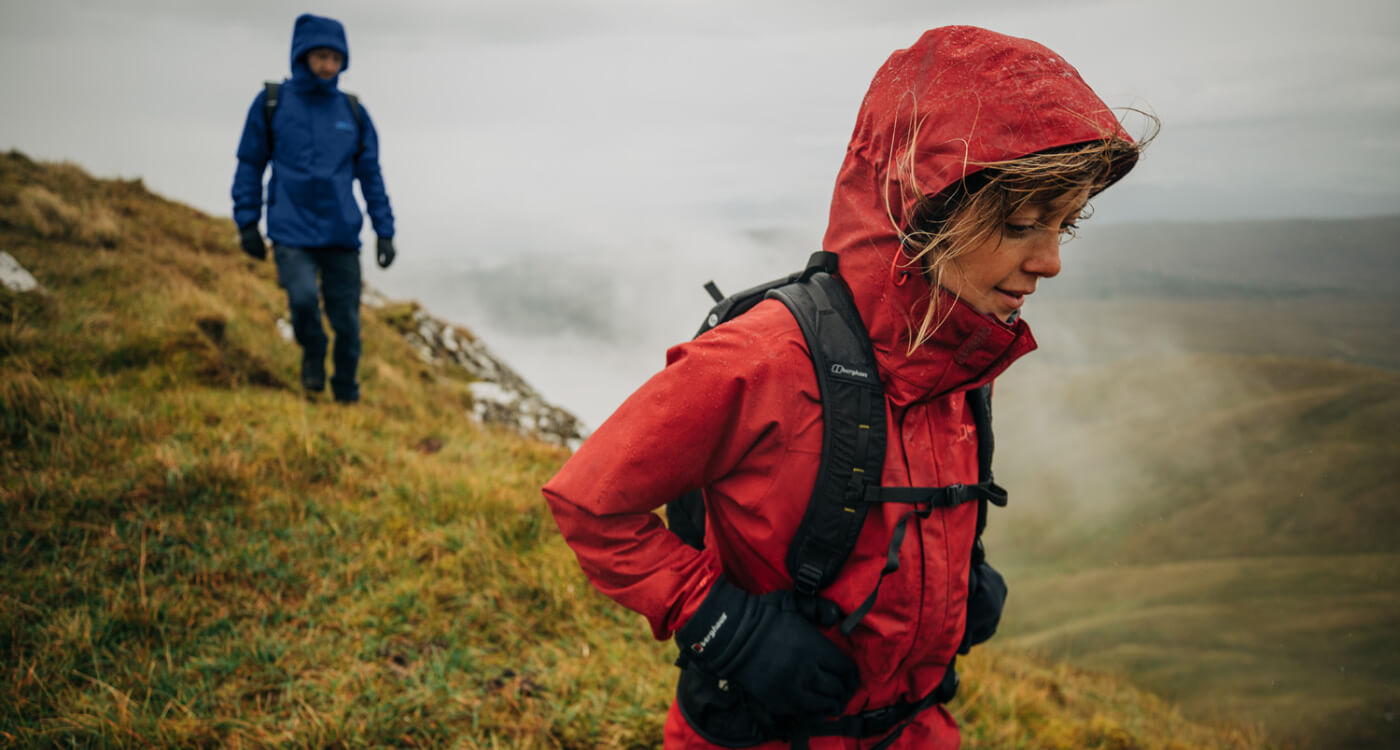
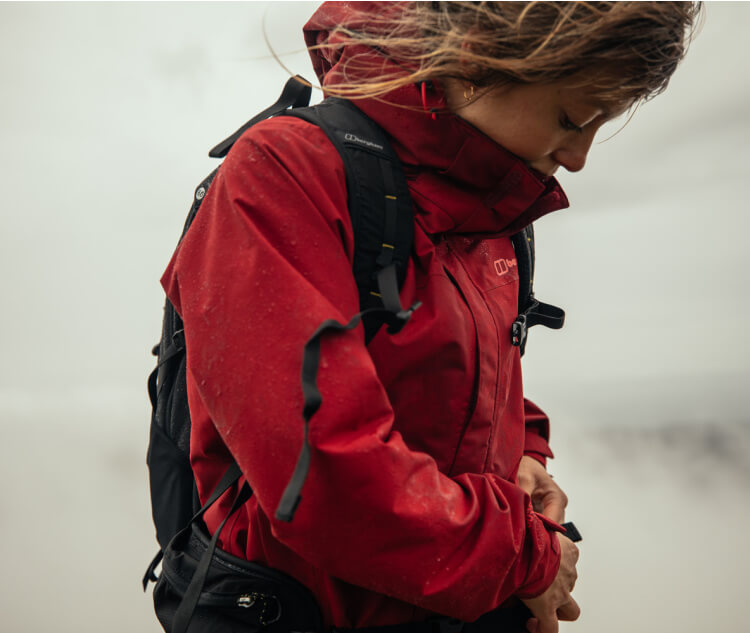
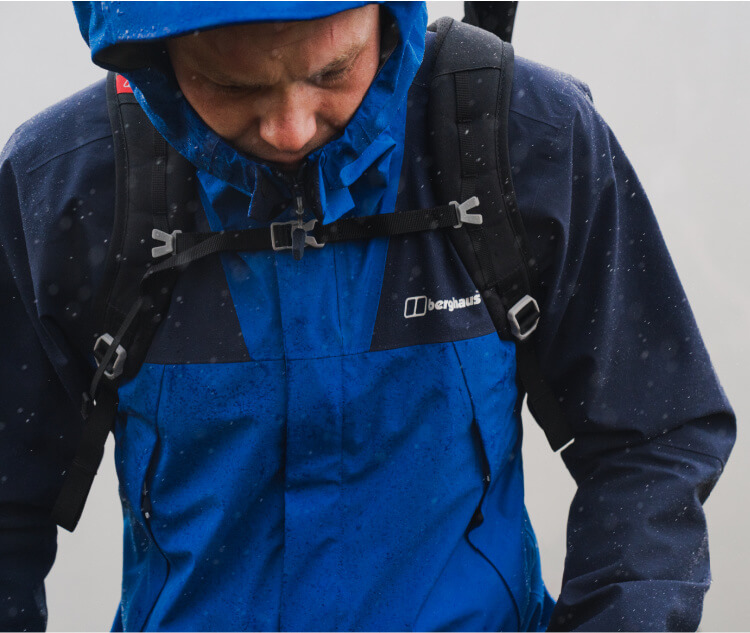
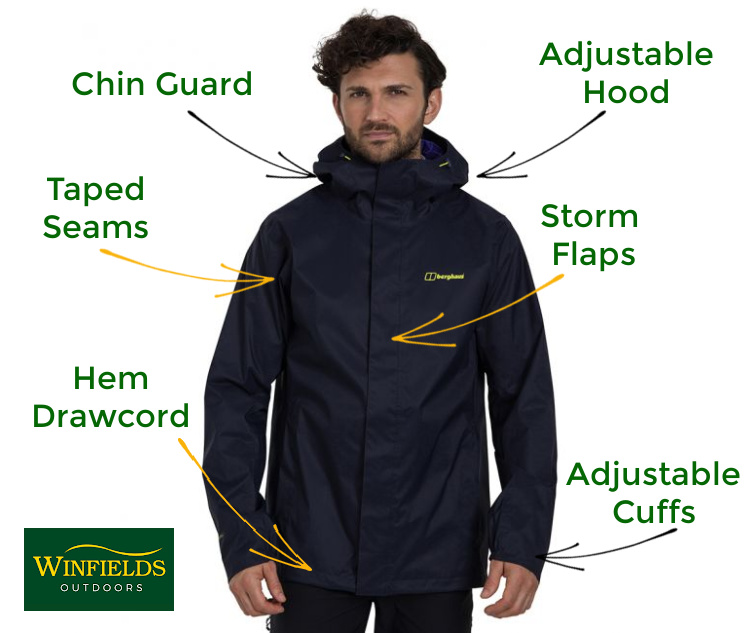
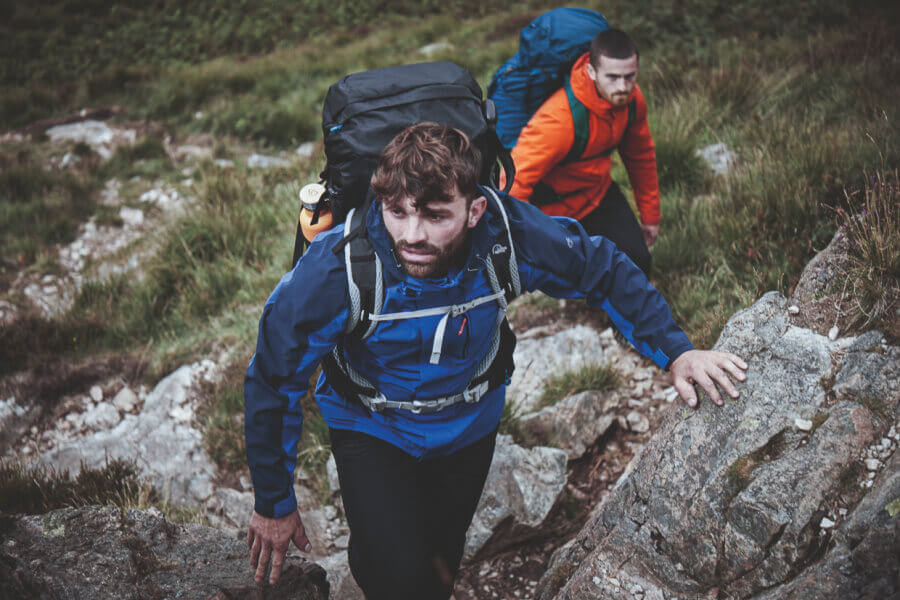




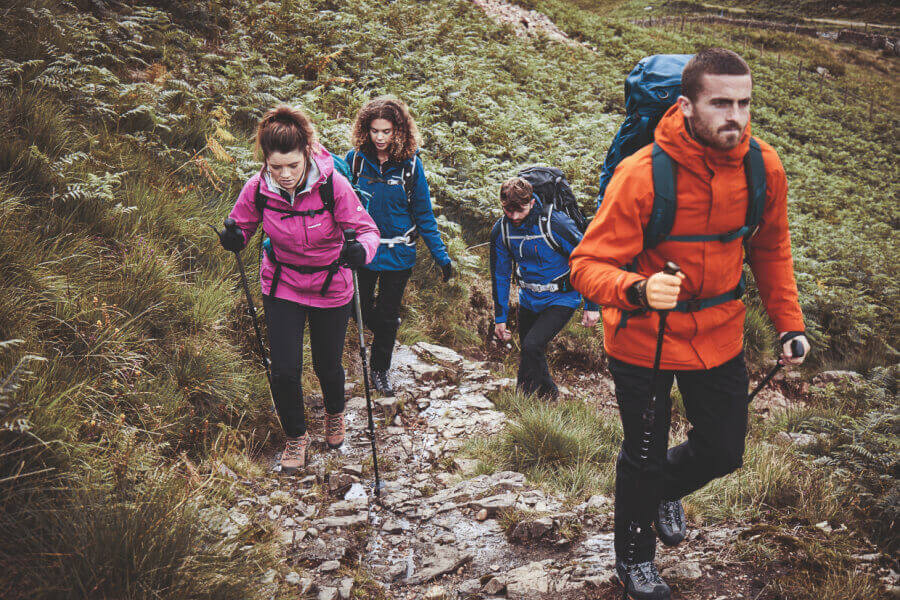
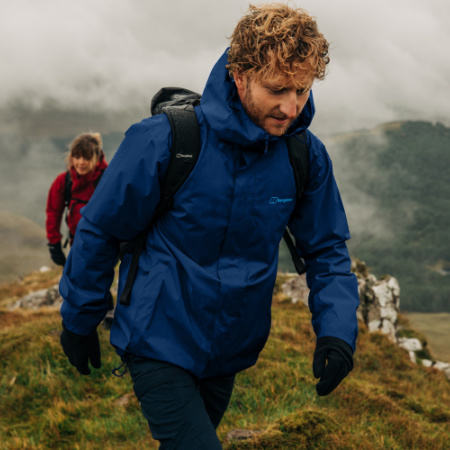
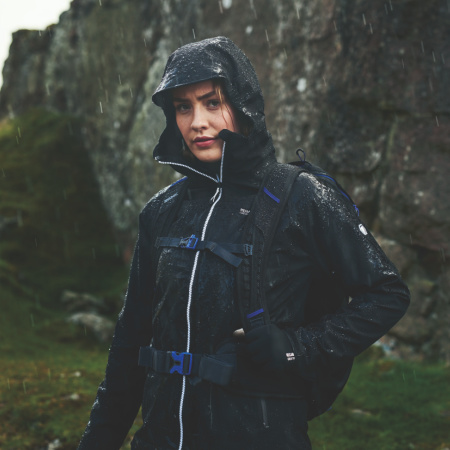
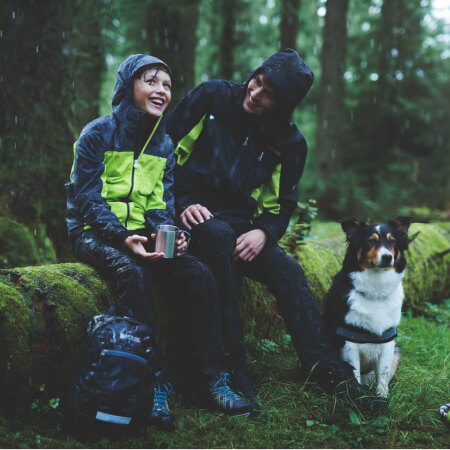
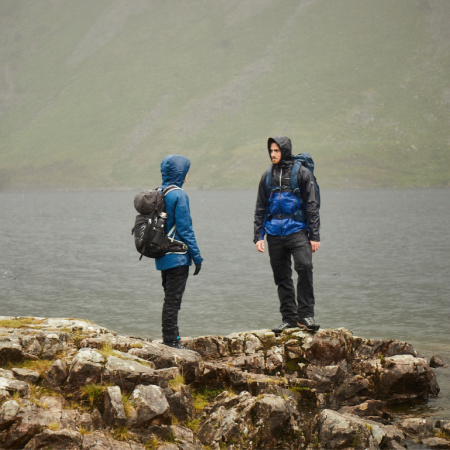






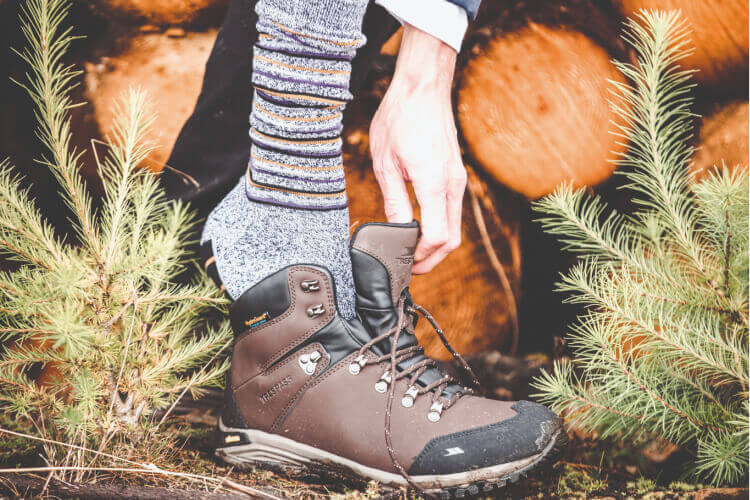
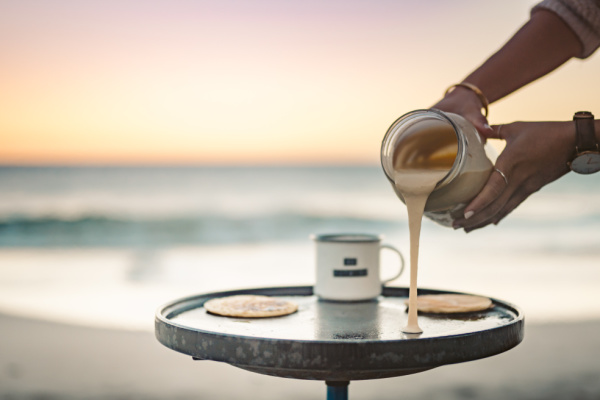
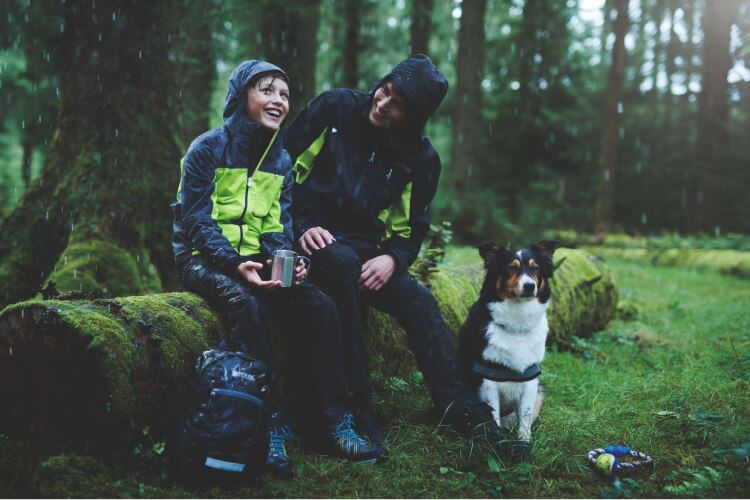

Excellent article, but I'm still slightly confused. I do 2 regular walks of 8 to 10mls each week, which in most cases are quite strenuous & I sweat like the proverbial pig, in fact I do likewise, when just walking into town 3mls away. But on my group walks I don't like to have too much clothing on, a "T" shirt & a light fleece I find is ample. But I still sweat even when a waterproof is not worn. Consequently I freeze when we stop for a lunch break. So what would you recommend I wear next to my skin to lessen this?
Also what is your feeling on the so called 100% Polyester Waterproof Breathable Jackets for when it rains.
Thank you for your time & I look forward to your reply.
Kind regards
B Jarvis
You'll sweat when you wear a t-shirt because cotton isn't very breathable and so doesn't let heat or moisture escape easily. It absorbs moisture rather than wicking it away, and it's this that makes you cold. We'd recommend wearing a baselayer against your skin - and you can find out more on this in our guide to layering clothing. Hopefully this helps!